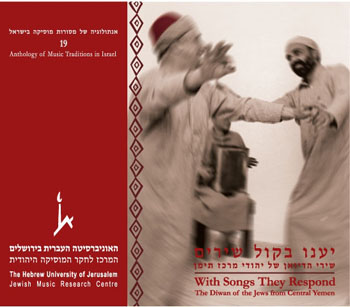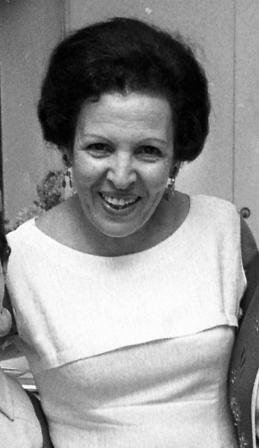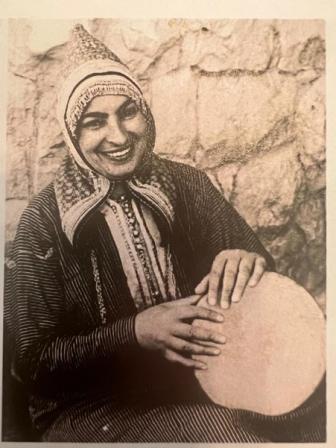1977
"Ayumah be-har hamor" (The Beloved on the mountain of myrrh)
Poem by Shalem Shabazi, signed Alsbab[az], containing six stanzas in Hebrew and Arabic alternately. The structure of each stanza is: four verses of two hemistiches, three verses in the form of a Tawshih and two verses of two hemistiches rhyming with the leading verse. It describes the victory of the Messiah over the enemies of Israel (Seri-Tobi: 155).
Here, the Hebrew stanzas (nos. 1, 3, and 5) are sung and printed (complete version, Scri- Tobi: 155-7). Three different modes of performance are illustrated here: solo, duet, and solo with ensemble. The freedom to choose stanzas or individual verses, and to repeat material while selecting melodics and the way they are sung, is illustrated very clearly here. The content of the poem and the variety of the melodies to which it is sung illustrate the way in which it has been assimilated into Israeli music over a period of generations. The hallmark of personal and communal traditions, which are determined by the singer's place of birth and education, is clearly discernible. The same singer, Menahem Arussi, sings both of the first two versions with different supporting singers. The difference between the two versions is quite palpable.
11. Aharon Amram and Menahem Arussi sing the three stanzas of the song to the same melody accompanied by tin pan and hand clapping, without the two final verses of stanzas 3 and 5. The singing is responsorial: Aharon Amram sings the opening and Menahem Arussi the closing hemistiches. In the Tawshiḥ every verse has one hemistich, and this, too, is sung as a response. Sometimes there is an overlapping effect: the respondent joins in before the previous performer has finished singing, and as a result they sing together for a short space.
12. Menahem Arussi and the Kiryat Ono male ensemble, accompanied by hand-clapping, drum and tin pan, sing the first and third stanzas to a single melody, different from that in the previous version. In the third stanza there is a minor variation; the direction of the melody is altered.
13. Zadok Zubeiri sings only the first stanza: starting with a slow melody in flowing rhythm, at the Tawshiḥ he adopts a fast rhythm accompanied by a drum. He repeats the first two verses to a new melody, to which he completes the last two verses of the stanza. The singer's pronunciation of Hebrew reveals that he was educated in Israel and influenced by performances of the song that were popular in the 1950s.







